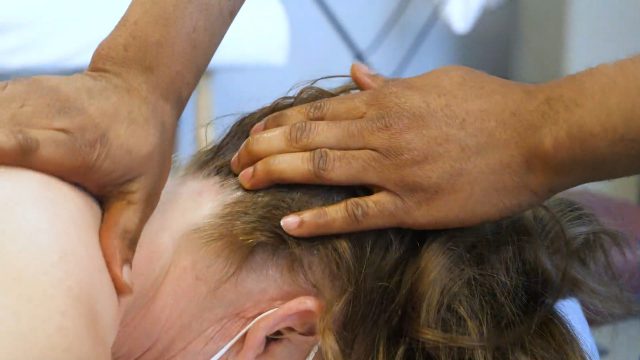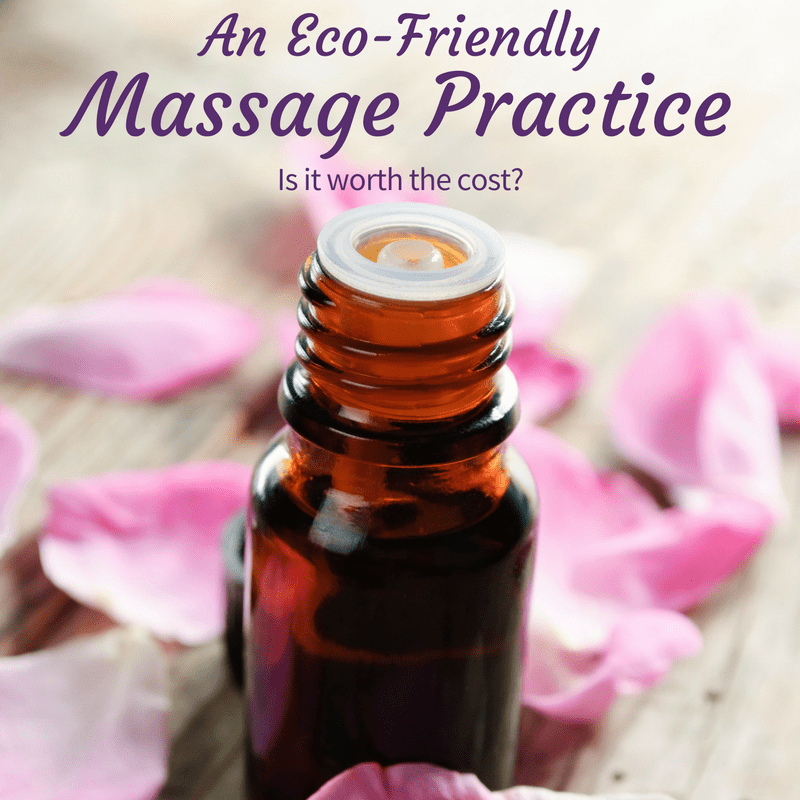Creating an Eco-Friendly Massage Practice
September 29, 2016

Massage therapists know the systems of the human body and how they work together. But have you given any thought to how our bodies interact with the environment? From the impact of product choices on the environment to the potential effect of substances on clients, there are a lot of reasons that massage therapists would make an eco-friendly practice a priority.
Massage therapists generally have a small environmental footprint, because they offer a personal service using a few select products. MTs use some supplies, such as oils, linens, and cleaning products. But typically, they don’t add a great deal to the mountains of waste our society generates.
But what choices are you making about the products that you use in your practice? Have you considered how your studio is built and furnished? In this case, you can choose to use eco-friendly disposable and durable products.
Eco-Friendly Building Materials
Lighting: LED lights are becoming more affordable, and are available in a range of warm colours. The incandescent lights we all grew up with put out as much heat as light, and burn out quickly, so they’re very inefficient. Compact flourescent bulbs are more efficient than incandescent lights, but are difficult to dispose of, difficult to dim, and are “cold” on the light spectrum.
Low VOC paint: Chalk paint, milk paint, or other products that are low odor and not highly processed can be much easier on your clients’ breathing, and on the environment as well.
Natural fiber flooring: Choose cork, bamboo, hardwood or sisal. You can even reuse flooring that was formerly in a gym or church hall. Prices can vary depending on what materials you use, but it beats dusty synthetic carpet or the off-gassing compounds of vinyl flooring.
Eco-Friendly Supplies
Oils: Choose organic or sustainable base massage oils from natural sources, and use pure plant essential oils instead of synthetic perfumes. Not only are these better for your clients’ health, it increases the demand for pesticide-free crops. One product where you could choose organic or “regular” oil is grapeseed oil. It’s a byproduct of the wine industry, and makes an excellent massage oil base. Even if you can’t afford the organic oil, you are repurposing what would otherwise go to waste.
Linens: Cotton is notorious for being a very pesticide-heavy product, but other options are available. You could pay more for organic cotton, or try another cloth fiber. For instance, bamboo grows quickly without pesticides, and its fabric is very soft to the touch.
Waxes: Some massage therapists offer hot wax treatments to alleviate muscle and joint pain. Instead of using paraffin, which is a petroleum product, you could use soy wax or beeswax.
Environmentally Sound Cleaning Products
Cleaning Products: Launder your linens in unscented, and biodegradable cleaners – some practitioners use natural soaps, vinegar, laundry soda and essential oils. You can use these products or essential oil-based commercial cleansers for keeping the studio clean, as well.
Natural and organic products are a great fit with the holistic philosophy of a massage therapy practice. Instead of using harsh chemicals, massage therapists use natural healing through touch and stretching. We work with the energy of the body to heal and rejuvenate itself. It makes sense, then, to extend that philosophy to our environment, too.
Massage therapy classes at First Institute focus on these natural healing techniques and hands-on practice. It’s an excellent, greener alternative to chemical treatments for many ailments.
Learn more about massage therapy at First Institute.
Developing an eco-friendly massage practice is well worth the cost, both in terms of walking your talk, and giving your clients the best. You may even find that it costs less than you think, and attracts more clients to your business.
More on Massage Therapy:


